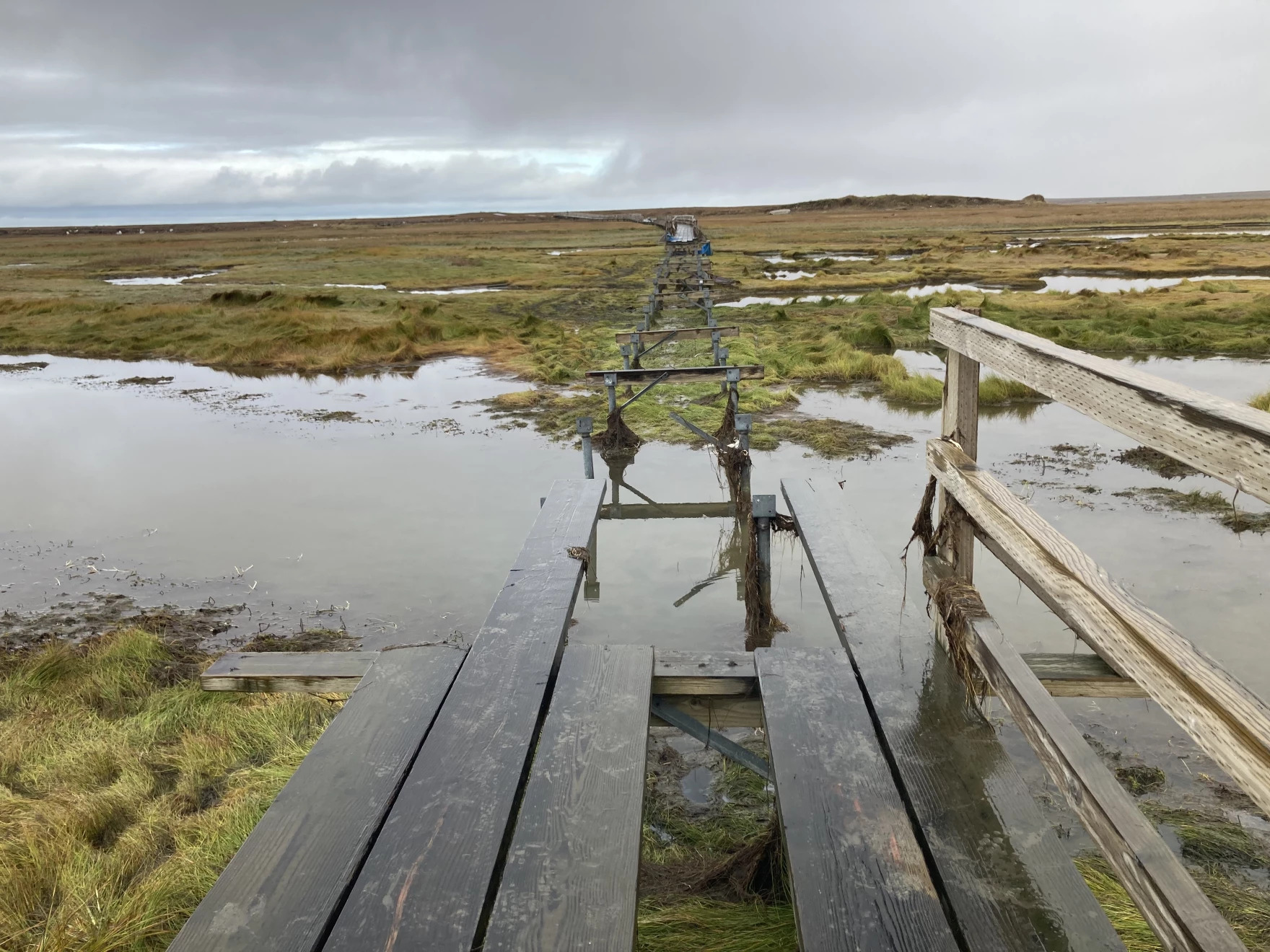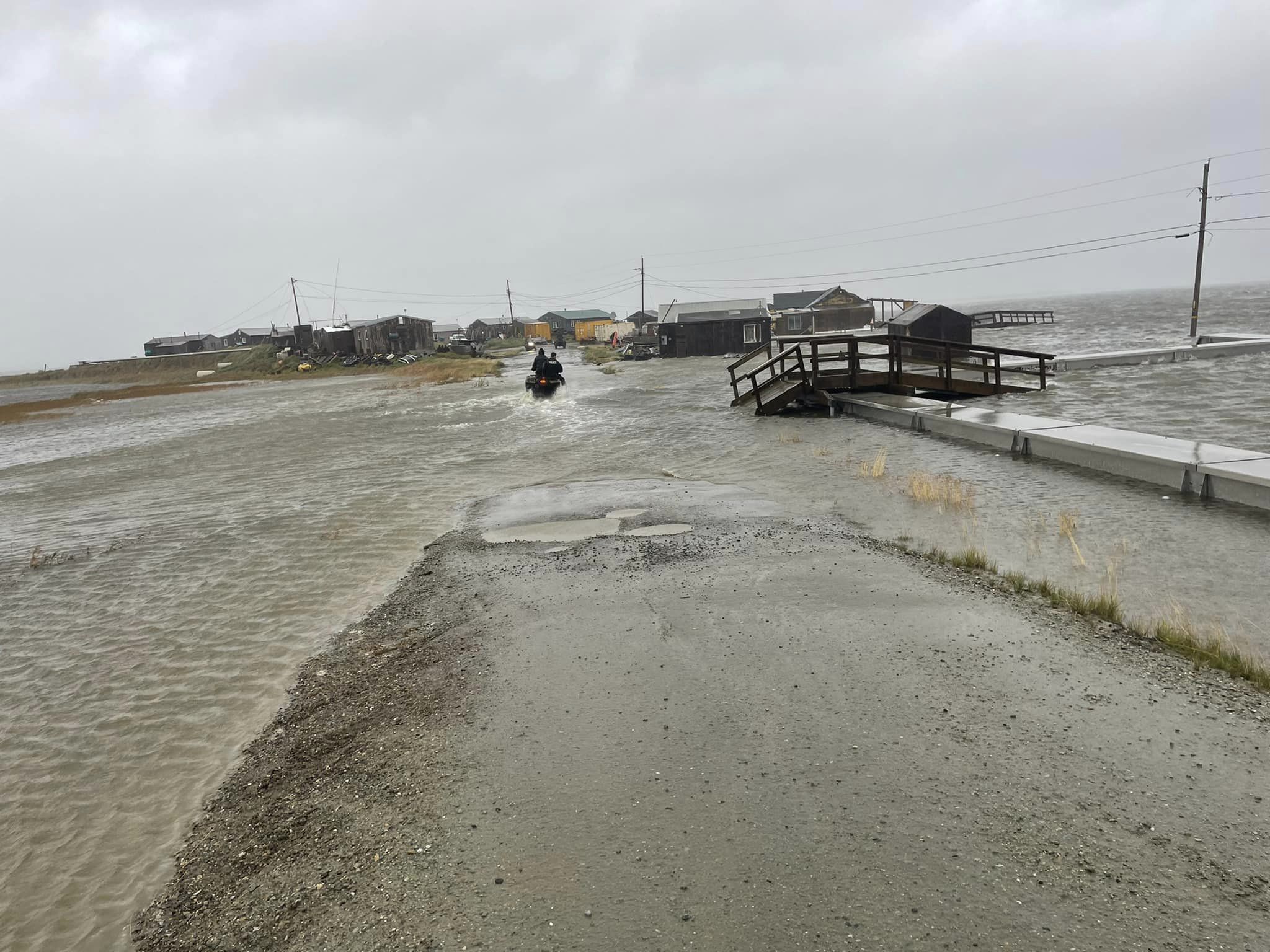
At the boat ramp by one of the sloughs running through Hooper Bay, John Rivers is checking on the damage to his boat. It’s one of the many vessels that were ripped from their anchors by a storm unlike anything Western Alaska had seen in years. But Rivers wasn’t surprised. His grandfather told him many years ago that this storm would come.
“The Elders told us long ago, this will happen, the storm, if you’re alive to see it,” Rivers said. “I lived to see it, Grandpa, I’ve seen it. After seeing that storm, it’s like, what’s next?”
In Hooper Bay, one of the villages hit hardest by the storm, school is back in session and cleanup has begun. The immediate aftermath of the flood has begun to pass. But residents of the 1,300-person village are just beginning to reckon with the emotional aftermath of the storm and what it means for their future.
“I’ve lived through storms before, but this was the worst,” said Loretta Smith, who lost her home in the storm. “The water came up so fast, and it was so high that the waves looked violent.”

Water rose faster and higher than anyone thought possible. Power outages threatened subsistence foods stored for the winter. There were panicked evacuations in waist-high water. Many of the most immediate crises, such as access to electricity and shelter, have been addressed. But residents of the village are still coming to terms with the raw feelings of what they experienced.
“I was afraid for my son and my grandma too,” Smith said. “How will we rescue them if the water comes up and it’s really cold? How will we save them?”
This emotional toll, ultimately, may be the most long-lasting damage inflicted on Hooper Bay by the storm. Although debris can be cleared and homes rebuilt, for many, a sense of security has been shattered.
The village was split in two by the rising waters, which turned parts of the town into literal islands in the storm. Families fled buildings while carrying their loved ones on their backs. If they couldn’t help each other, who would come in time to help the people of Hooper Bay?
Emma Smith, who works for the tribal council, has spent most of her life in the village. Because of the storm, she’s now considering leaving.
“I don’t know how to swim; I don’t have a boat. I’m a single grandma taking care of kids,” Smith said. “People were not there when my roof flew away; we had to run away ourselves. Will they be there now if it happens again?”
Mary Hoelscher, another lifelong resident of the village, thinks that it’s time that the town starts to consider relocating. One of her main concerns is that the boardwalk, which could bring people to higher ground in the event of an even stronger flood, was washed out by the storm. Even if it’s rebuilt, Hoelscher said that there’s no guarantee it won’t wash out next time. With the boardwalk gone, there would be no way to reach higher ground.
“On both sides of Hooper Bay there’s two sloughs, so we’re literally surrounded by water,” Hoelscher said. “Eighty, 90, or 100 mile per hour winds and no planes can come to evacuate people.”
Hoelscher also fears future floods will only become worse, in part because many of the rows of dunes that protected the village from storm surges were completely washed away by the storm. The next time a storm comes, there’s one less barrier to stop the water. Meanwhile, climate experts say that these types of storms are becoming increasingly common.
Taken together, lifelong residents like Hoelscher and Smith feel that the storm calls Hooper Bay’s entire existence into question.
“I know worry wouldn’t solve any problems, but it’s hard not to worry after seeing and experiencing what we went through with that storm,” Smith said.
Rivers, by his boat at the slough, said that he is also fearful for the future. He lived to see his grandfather’s prediction come true, but he doesn’t know what will come next.
“He tried to make us understand the world is about to end,” Rivers said. “But the worst is yet to come.”
For more news coverage of the storm and its impacts visit alaskapublic.org/weather.




